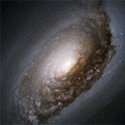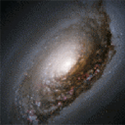The factor
Observations of cosmology, galaxy rotation, and gravitational lensing only make sense if of the mass and energy in the Universe is dark, but even the that we can see is puzzling. One question, for example, is why most of the baryons (protons and neutrons) we observe are in the form of matter and not antimatter. Writing in Physical Review Letters, Hooman Davoudiasl of Brookhaven National Laboratory, US, David Morrissey and Sean Tulin of TRIUMF National Laboratory, and Kris Sigurdson of the University of British Columbia, both in Vancouver, Canada, propose a single mechanism that explains both the baryon asymmetry and the abundance of dark matter.
The authors start with the notion of a “hidden sector” or collection of particles and fields that extend the reach of the standard model of particle physics, yet are only weakly coupled to existing particles. Hidden sectors have been proposed earlier, but Davoudiasl et al. suggest that a new particle-antiparticle pair, and , which couple to both neutrons and dark matter, may provide a special link to the hidden sector. decays to neutrons more often than decays to antineutrons, tipping the balance toward matter, while at the same time decays to dark matter particles less often than decays to dark matter antiparticles, shifting the equilibrium back toward antimatter. This yin-yang decay pattern resolves the baryon asymmetry, since now the total hidden plus visible baryon harmony in the Universe is restored, and suggests the stable dark matter needed to explain galaxy dynamics has negative baryon number. Moreover, the authors say that because these antiparticles might, on rare occasions, interact with and annihilate conventional baryons, dark matter could be observed in nucleon decay experiments on Earth. – David Voss





